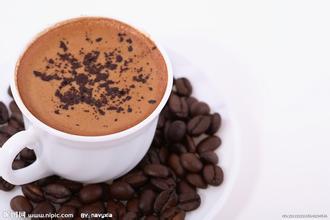Ethiopian Coffee Gemma area introduces boutique coffee beans
Readers interested in Ethiopian boutique beans should pay more attention to the producing areas of Sidamo, Yegashifi (especially rare sun-dried beans), Harald, Lim and Jinbi, whose rich orange and floral aromas are different from those of Central and South American beans. Ethiopia is a treasure trove of coffee genes, and experts estimate that there may be more than 2,000 Arabica subspecies hidden in the country, but the biggest dilemma facing the coffee industry in Ethiopia is that the output is too low. This is related to small-scale farming and organic cultivation, with an average yield of about 800,1200 kilograms per hectare, which is much lower than that in Central and South America (Costa Rica produces an average of two tons of coffee beans per hectare), which shows that Egypt still has a long way to go to increase production. In addition, natural low-caffeine coffee trees in Egypt are being planted. Natural low-caffeine beans can be sold as sun-dried beans as soon as two ○○ in nine years. It is very common in the ROC market, also known as Ethiopian mocha, but its price is much lower than that of Harald mocha. Jima production area is famous for its many varieties, coffee quality and flavor are also extremely changeable, lucky to be able to buy good goods at a low price. The quality of Gemma, tangerine and sweetness are as good as the higher-priced Sidamo, but you can't expect good luck every time. Although Gemma is treated in the sun, the coffee beans are less fruity, sunny and even earthy, which should be related to the lack of rigor. For every penny, bulk commercial beans will inevitably be mixed with good beans and bad beans. But do not underestimate the potential of Gemma to develop high-quality beans, because there is a Kafa forest as a base, so there is no lack of excellent varieties, as long as the sun production process is improved, the quality will certainly improve rapidly.
Gemma is the capital of the Kafa Forest, to the south to the Gbarnga, the capital of the ancient Kafa Kingdom, which is famous for its wild coffee. During the seven-year summer vacation of ○⊙, the Egyptian authorities announced that natural low-caffeine coffee trees had been planted on a large scale. The low-caffeine varieties that have attracted worldwide attention were found in the Kafa Forest and added a lot of topics to this area.

Important Notice :
前街咖啡 FrontStreet Coffee has moved to new addredd:
FrontStreet Coffee Address: 315,Donghua East Road,GuangZhou
Tel:020 38364473
- Prev

Introduction to the Flavor of Coffee Bean producing area in Indonesia
The main coffee producing area Java, the oldest producing area, continues its reputation from the glorious era of Indonesian coffee in the 18th century. When it comes to Java coffee, it is still reminiscent of quality and delicacy. At that time, the most famous blend was Java coffee with Yemeni mocha. In addition, Java also has a very famous old coffee Aged coffee, or monsoon coffee Monsooned c
- Next

Introduction to the growing area of Coffee Manor in Papua New Guinea
The legendary background of modern coffee. In Papua New Guinea, about 75 per cent of coffee products come from small local farmers
Related
- Does Rose Summer choose Blue, Green or Red? Detailed explanation of Rose Summer Coffee plots and Classification in Panamanian Jade Manor
- What is the difference between the origin, producing area, processing plant, cooperative and manor of coffee beans?
- How fine does the espresso powder fit? how to grind the espresso?
- Sca coffee roasting degree color card coffee roasting degree 8 roasting color values what do you mean?
- The practice of lattes: how to make lattes at home
- Introduction to Indonesian Fine Coffee beans-- Java Coffee producing area of Indonesian Arabica Coffee
- How much will the flavor of light and medium roasted rose summer be expressed? What baking level is rose summer suitable for?
- Introduction to the characteristics of washing, sun-drying or wet-planing coffee commonly used in Mantenin, Indonesia
- Price characteristics of Arabica Coffee Bean Starbucks introduction to Manning Coffee Bean Taste producing area Variety Manor
- What is the authentic Yega flavor? What are the flavor characteristics of the really excellent Yejasuffi coffee beans?

